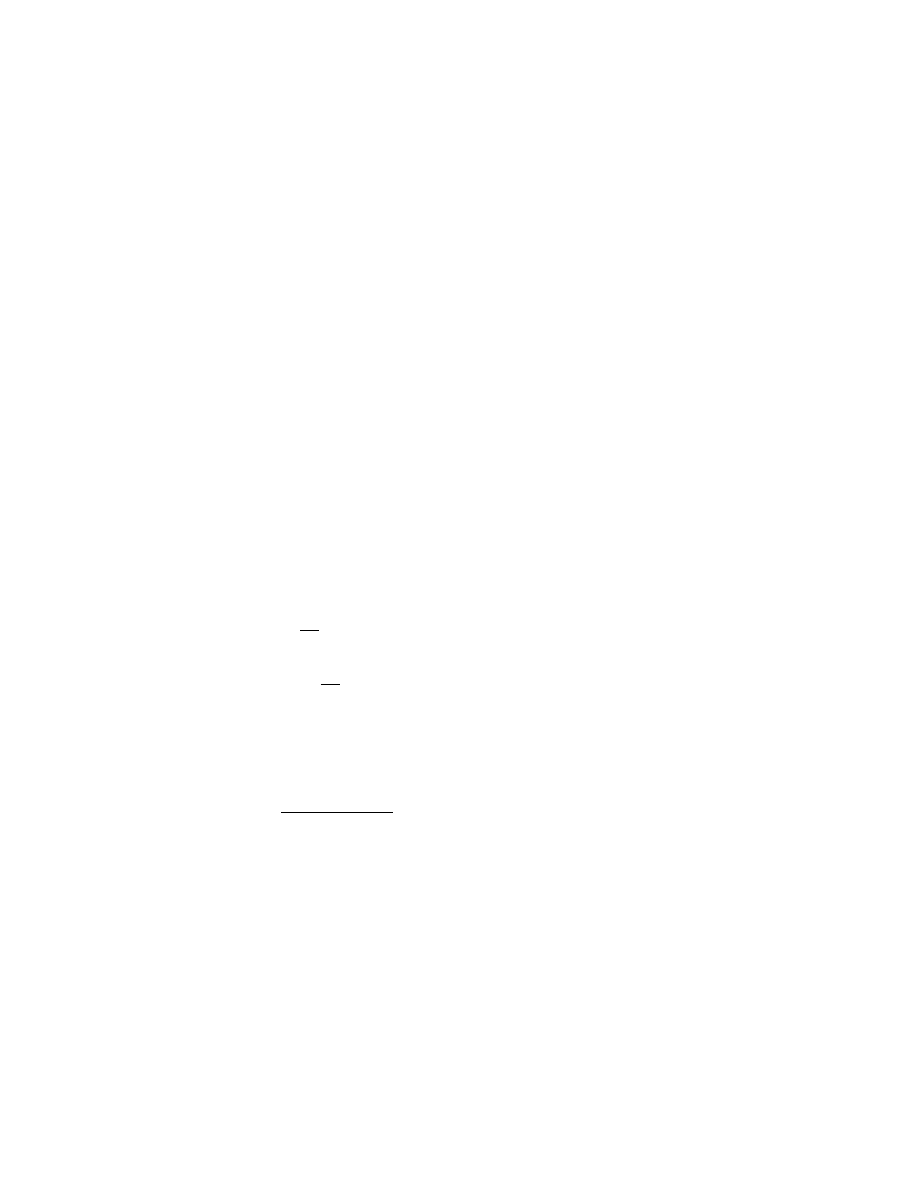
334
14 CFR Ch. I (1–1–14 Edition)
Pt. 23, App. A
(2) The wing and wing carry-through struc-
tures must be designed for 100 percent of con-
dition ‘‘A’’ loading on one side of the plane
of symmetry and 70 percent on the opposite
side for certification in the normal and util-
ity categories, or 60 percent on the opposite
side for certification in the acrobatic cat-
egory.
(3) The wing and wing carry-through struc-
tures must be designed for the loads result-
ing from a combination of 75 percent of the
positive maneuvering wing loading on both
sides of the plane of symmetry and the max-
imum wing torsion resulting from aileron
displacement. The effect of aileron displace-
ment on wing torsion at
V
C
or
V
A
using the
basic airfoil moment coefficient modified
over the aileron portion of the span, must be
computed as follows:
(i)
Cm=Cm +0.01
dm (up aileron side) wing
basic airfoil.
(ii)
Cm=Cm ¥0.01
dm(down aileron side) wing
basic airfoil, where
dm is the up aileron de-
flection and
d d is the down aileron deflec-
tion.
(4)
D critical, which is the sum of dm+d d
must be computed as follows:
(i) Compute
Da and D
B
from the formulas:
Δ
Δ
Δ
Δ
a
A
C
p
b
A
D
p
V
V
V
V
=
×
=
×
and
0 5
.
Where
D
P
=the maximum total deflection
(sum of both aileron deflections) at
V
A
with
V
A,
V
C,
and
V
D
described in subpara-
graph (2) of § 23.7(e) of this appendix.
(ii) Compute
K from the formula:
K
C
V
C
V
m
b
D
m
a
C
=
−
(
)
−
(
)
0 01
0 01
2
2
.
.
δ
δ
where
da is the down aileron deflection cor-
responding to
Da
,
and
db is the down aile-
ron deflection corresponding to
D b as
computed in step (i).
(iii) If
K is less than 1.0,
Da is D critical and
must be used to determine
d
U
and
dd. In this
case,
V
C
is the critical speed which must be
used in computing the wing torsion loads
over the aileron span.
(iv) If
K is equal to or greater than 1.0,
D
B
is
D critical and must be used to determine
d
U
and
d
D
. In this case,
V
d
is the critical
speed which must be used in computing the
wing torsion loads over the aileron span.
(d)
Supplementary conditions; rear lift truss;
engine torque; side load on engine mount. Each
of the following supplementary conditions
must be investigated:
(1) In designing the rear lift truss, the spe-
cial condition specified in § 23.369 may be in-
vestigated instead of condition ‘‘G’’ of figure
4 of this appendix. If this is done, and if cer-
tification in more than one category is de-
sired, the value of
W/S used in the formula
appearing in § 23.369 must be that for the cat-
egory corresponding to the maximum gross
weight.
(2) Each engine mount and its supporting
structures must be designed for the max-
imum limit torque corresponding to METO
power and propeller speed acting simulta-
neously with the limit loads resulting from
the maximum positive maneuvering flight
load factor
n
1
. The limit torque must be ob-
tained by multiplying the mean torque by a
factor of 1.33 for engines with five or more
cylinders. For 4, 3, and 2 cylinder engines,
the factor must be 2, 3, and 4, respectively.
(3) Each engine mount and its supporting
structure must be designed for the loads re-
sulting from a lateral limit load factor of not
less than 1.47 for the normal and utility cat-
egories, or 2.0 for the acrobatic category.
A23.11
Control surface loads.
(a)
General. Each control surface load must
be determined using the criteria of para-
graph (b) of this section and must lie within
the simplified loadings of paragraph (c) of
this section.
(b)
Limit pilot forces. In each control surface
loading condition described in paragraphs (c)
through (e) of this section, the airloads on
the movable surfaces and the corresponding
deflections need not exceed those which
could be obtained in flight by employing the
maximum limit pilot forces specified in the
table in § 23.397(b). If the surface loads are
limited by these maximum limit pilot forces,
the tabs must either be considered to be de-
flected to their maximum travel in the direc-
tion which would assist the pilot or the de-
flection must correspond to the maximum
degree of ‘‘out of trim’’ expected at the speed
for the condition under consideration. The
tab load, however, need not exceed the value
specified in Table 2 of this appendix.
(c)
Surface loading conditions. Each surface
loading condition must be investigated as
follows:
(1) Simplified limit surface loadings for the
horizontal tail, vertical tail, aileron, wing
flaps, and trim tabs are specified in figures 5
and 6 of this appendix.
(i) The distribution of load along the span
of the surface, irrespective of the chordwise
load distribution, must be assumed propor-
tional to the total chord, except on horn bal-
ance surfaces.
(ii) The load on the stabilizer and elevator,
and the load on fin and rudder, must be dis-
tributed chordwise as shown in figure 7 of
this appendix.
(iii) In order to ensure adequate torsional
strength and to account for maneuvers and
VerDate Mar<15>2010
10:12 Mar 18, 2014
Jkt 232046
PO 00000
Frm 00344
Fmt 8010
Sfmt 8002
Y:\SGML\232046.XXX
232046
EC28SE91.021</MATH>
EC28SE91.022</MATH>
pmangrum on DSK3VPTVN1PROD with CFR